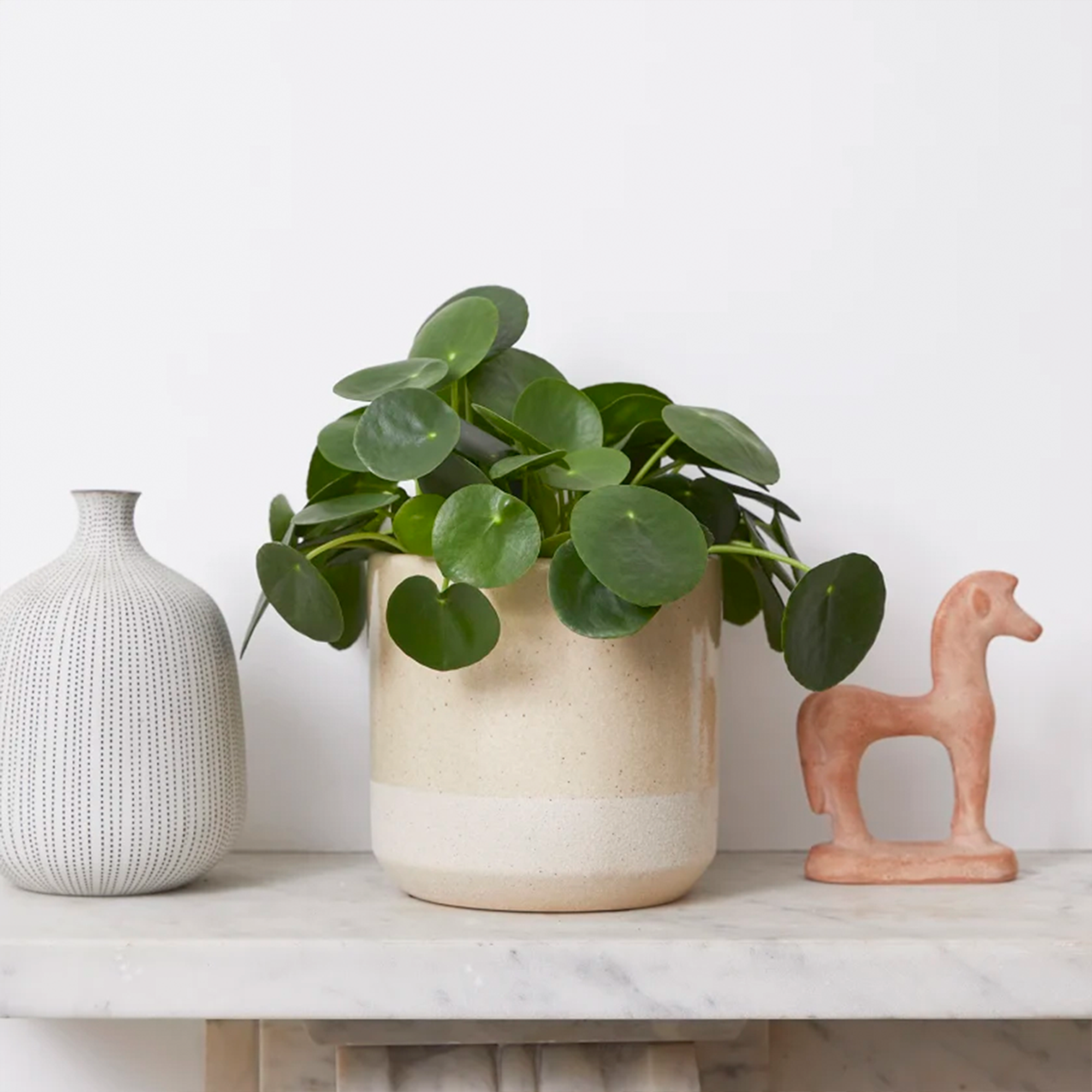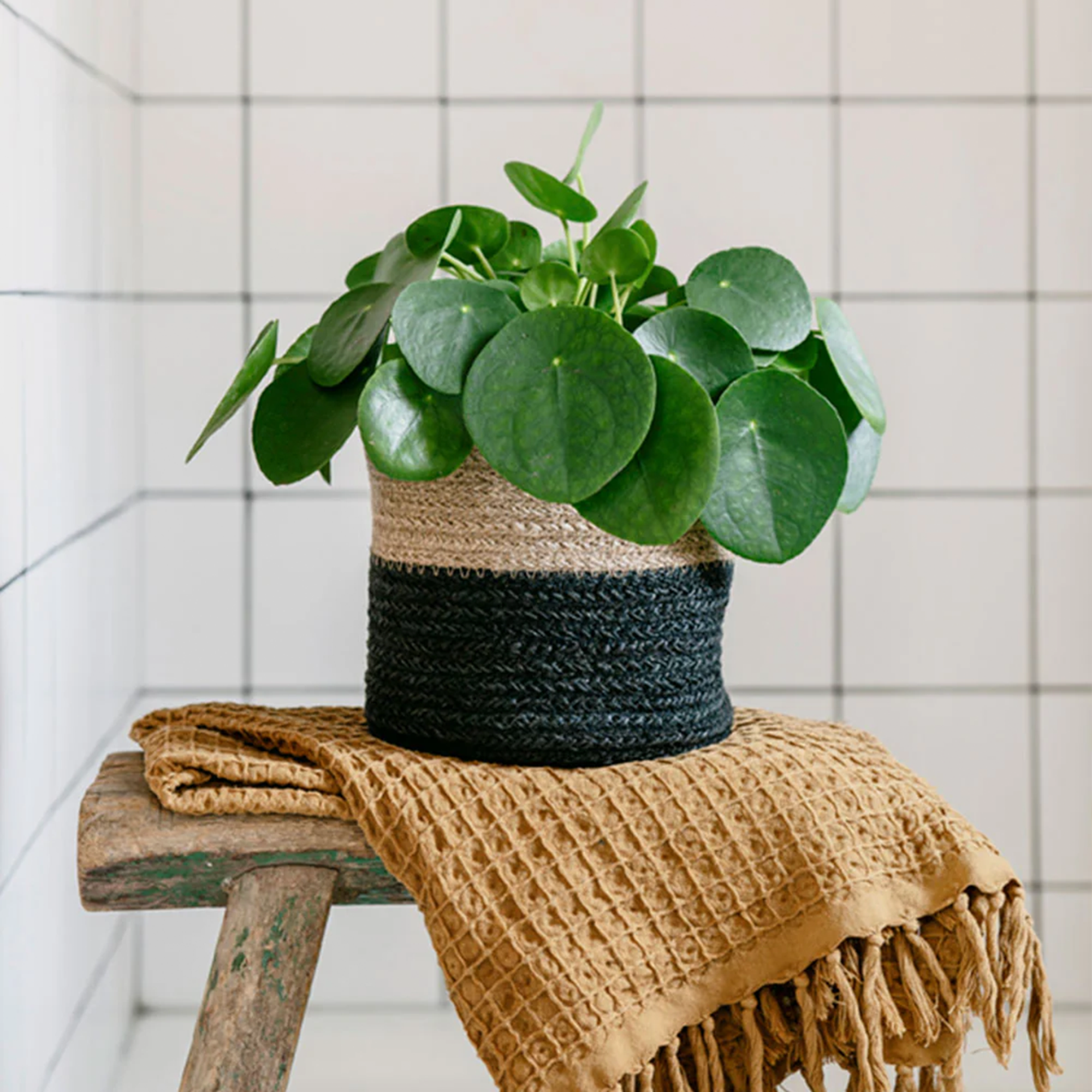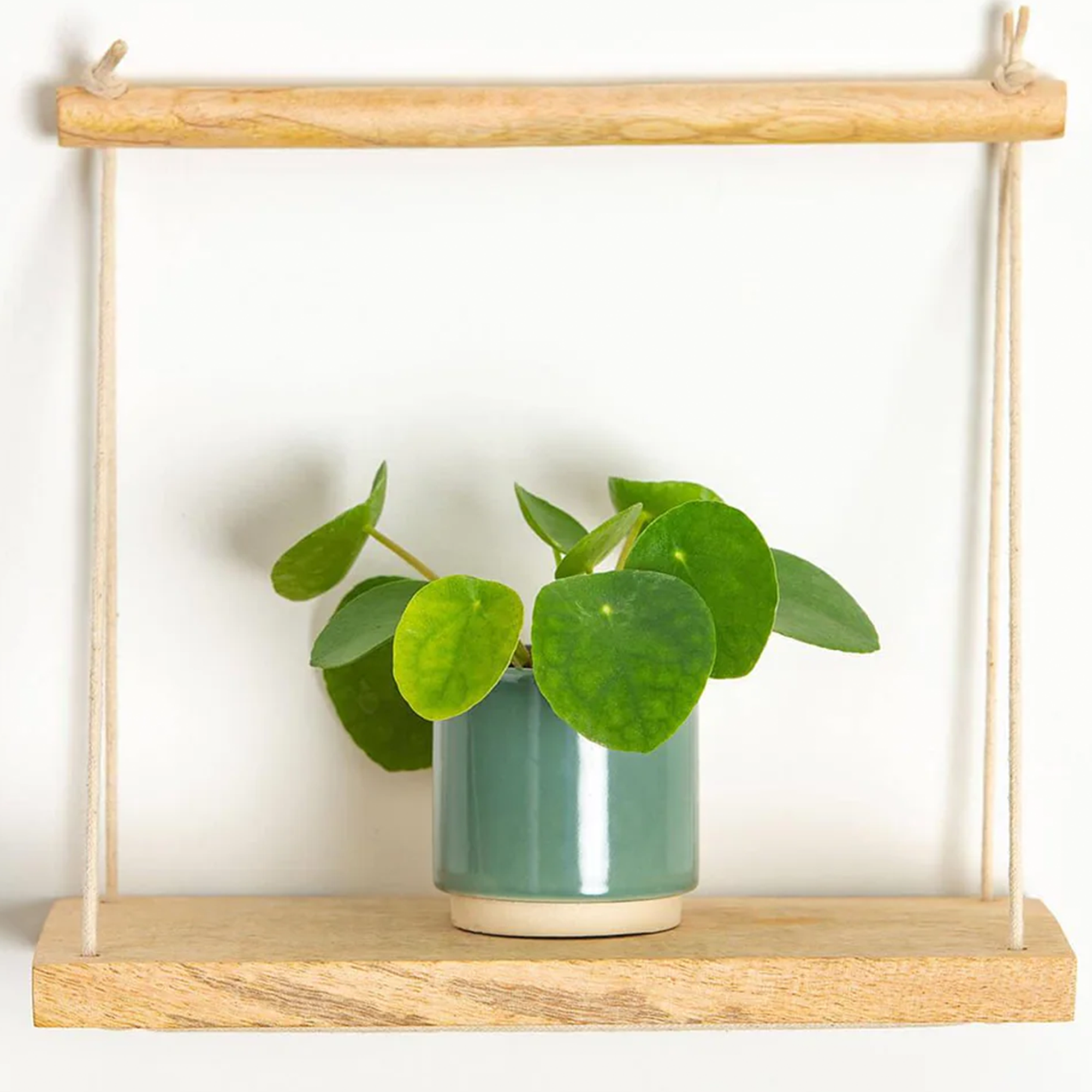How to care for a Chinese money plant – it's all about position and watering, say the experts
This beautiful and easy-to-care-for houseplant will bring you good luck and prosperity
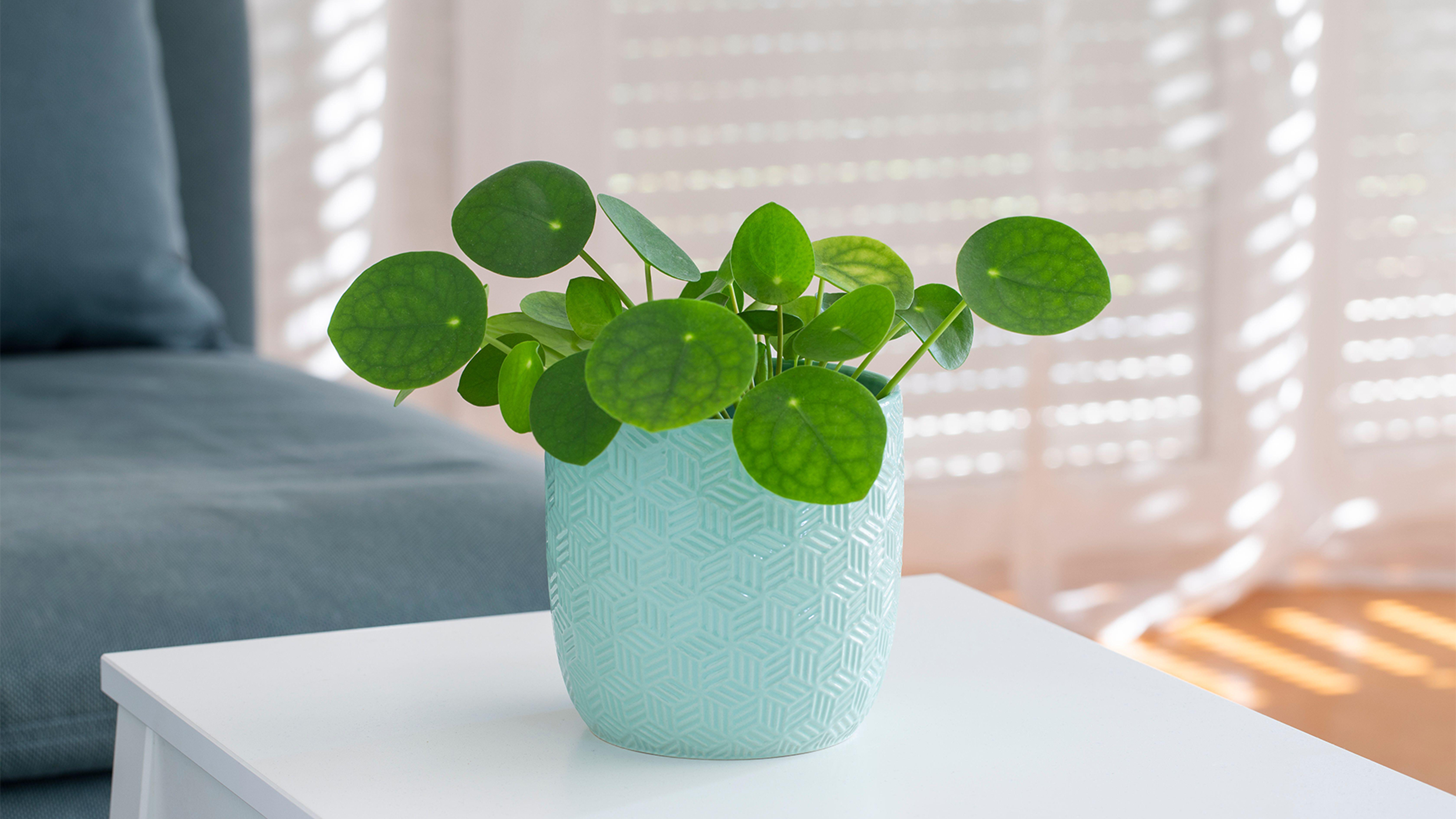

Learning how to care for a Chinese money plant is remarkably easy – especially when you find the perfect spot and get the right amount of water.
Officially known as Pilea peperomioides, this simple yet characterful house plant has many names including Chinese Money Plant, Coin Plant, UFO plant, Lefse plant, or Pancake Plant – all inspired by its perfectly round leaves.
Learn how to care for a Chinese money plant and you'll be richly rewarded. According to Feng Shui, Pilea peperomioides are one of the luckiest houseplants. ‘The plant’s round coin-shaped leaves are seen as a symbol of prosperity and are often gifted over the Lunar New Year,’ says Julian Palphramand, head of plants for British Garden Centres.
‘Pilea is moderately easy to care for houseplant,’ says Patch’s Plant Doctor, Kelly Dyer. ‘They’re prone to death by over-watering and insufficient light more than anything else. Get these two key factors right and Pilea are quick-growing, easy-care houseplants.’
What you will need
- Pilea peperomioides
- Plastic pot with drainage holes – one size larger than the size of the plant bought
- Decorative pot without holes
- A liquid houseplant fertiliser, for example, Baby Bio Houseplant Fertiliser on Amazon
- A trowel
- Houseplant compost, such as Westland Houseplant Potting mix on Amazon
Where to buy Chinese Money Plants
Where is the best place to put a Chinese Money Plant?
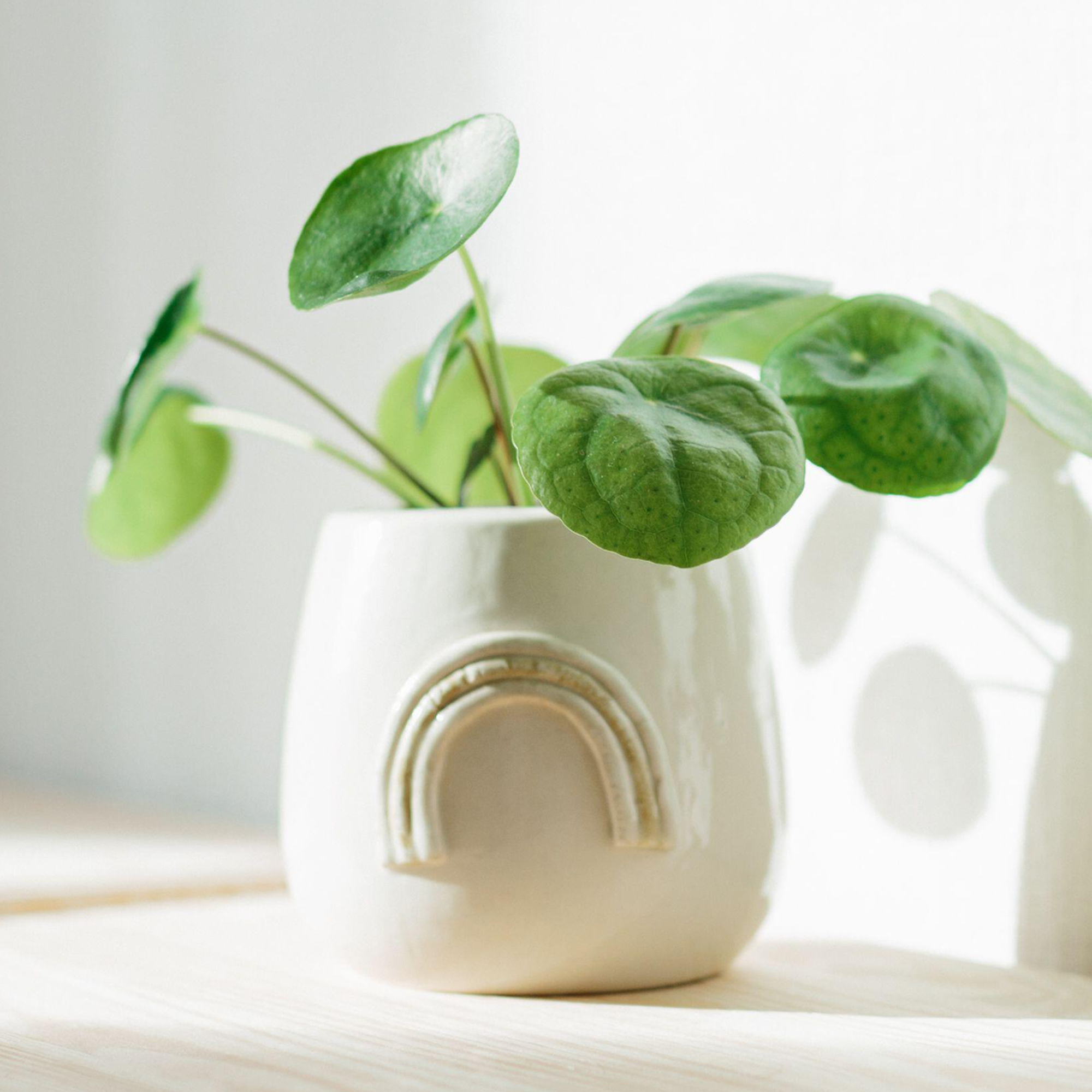
When learning how to care for a Chinese money plant, it is useful to know a little about its natural habitat. Native to southern China, Pilea are part of the same plant family as nettles and are one most Instagrammed houseplants.
‘Pilea thrive positioned in bright indirect light; this means the plant sees the sun for one and four hours per day - this could be through trees or a translucent curtain,’ says Lisa Price, founder at Root Houseplants.
‘I grow mine in an east-facing window. Temperatures ought to be no lower than 13˚C and up to 30˚C,’ adds Lisa Price. Avoid placing near draughts, above radiators or by vents as the fluctuations in temperature can cause the plant to lose leaves.
Get the Ideal Home Newsletter
Sign up to our newsletter for style and decor inspiration, house makeovers, project advice and more.
Pilea enjoys relatively high levels of humidity and as such is one of the best kitchen plant ideas. ‘I would actively avoid misting them as any water droplets that sit on their fleshy leaves without evaporating quickly enough are likely to leave marks and/or create sites for bacteria or mould to develop,’ explains Patch’s Plant Doctor, Kelly.
One thing to note is that pilea grow towards the light and therefore benefit from rotating every week or two – this will help them grow straight.
How often do you water a Chinese money plant?
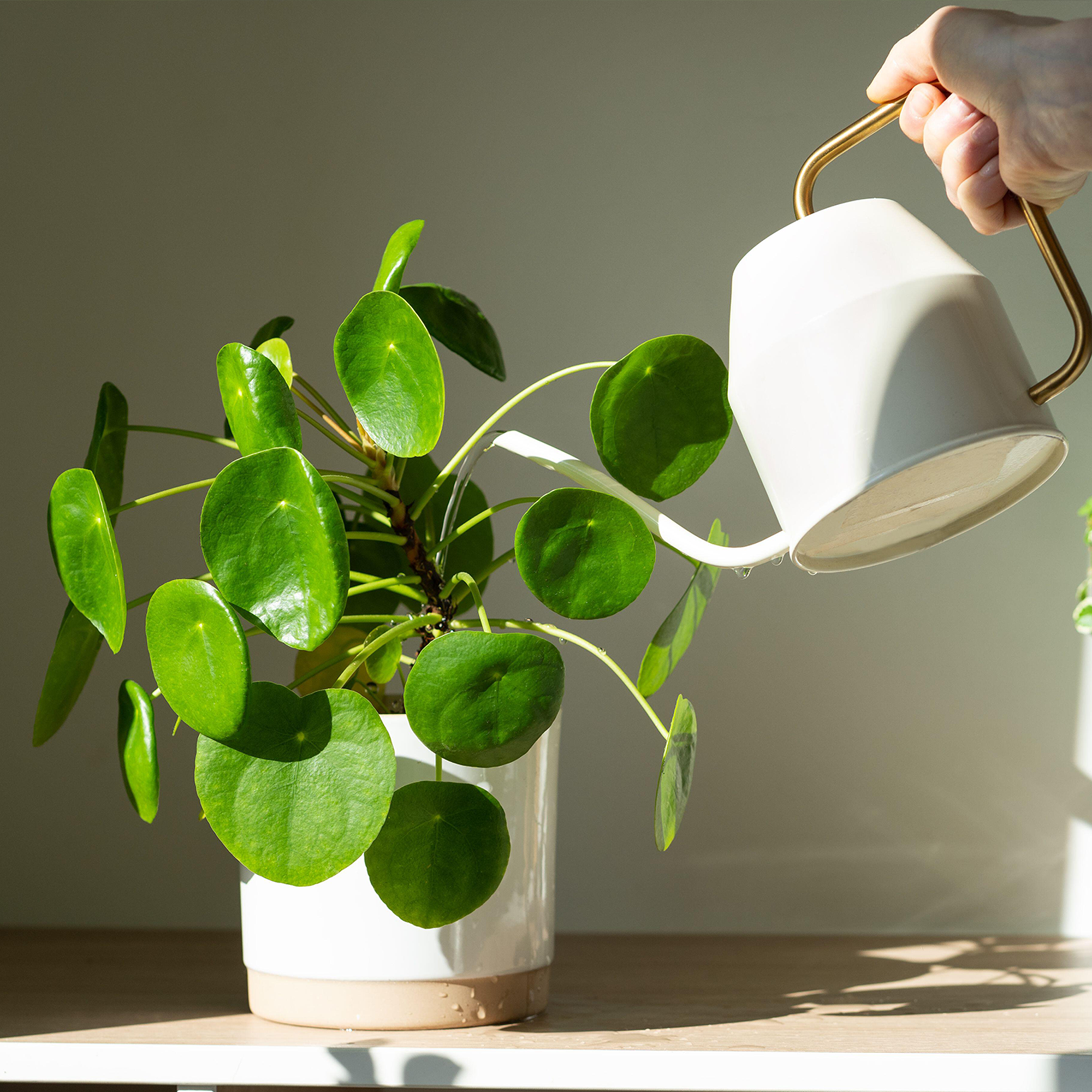
Overwatering is the biggest killer of pilea plants.
‘Less is more,’ says Kelly. ‘Let the growing medium dry out almost completely before watering again. Let the water drain through the bottom of the nursery pot and drain out any excess.'
'A thorough watering less frequently is better than little and often.' If your Chinese plant suffers from overwatering, then it's time to learn how to save an overwatered plant.
‘Using a liquid house plant food once a month during the growing season,’ advises Andy Little, houseplant buyer at British Garden Centres.
When should I repot a Chinese money plant?
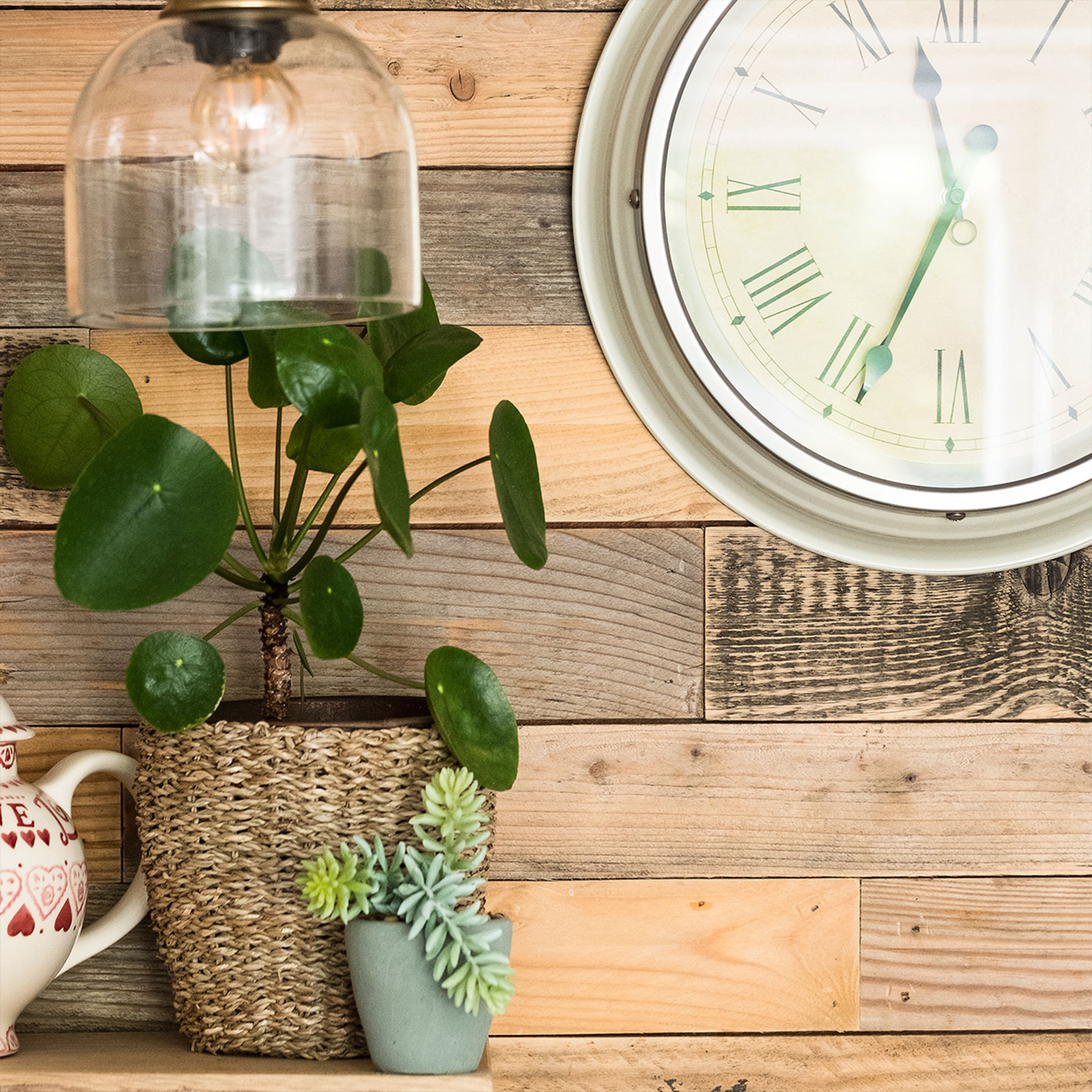
Chinese money plants are one of the best fast-growing houseplants, but repotting should only be carried out when there is evidence of the plant having outgrown the pot.
‘The general rule of thumb is every two to three years but I would recommend making an annual assessment,’ Kelly advises. 'The easiest way to see if your houseplant needs repotting is to check whether roots are growing through the drainage holes or if there are more roots than soil visible when removed from the pot.'
Knowing when to repot houseplants as well as how to repot houseplants are both vital skills. Opt for a pot that is only a few centimetres larger than the current one – this will prevent there being too much soil, which can become waterlogged. Plant in well-draining houseplant compost.
Should I trim my Chinese money plant?
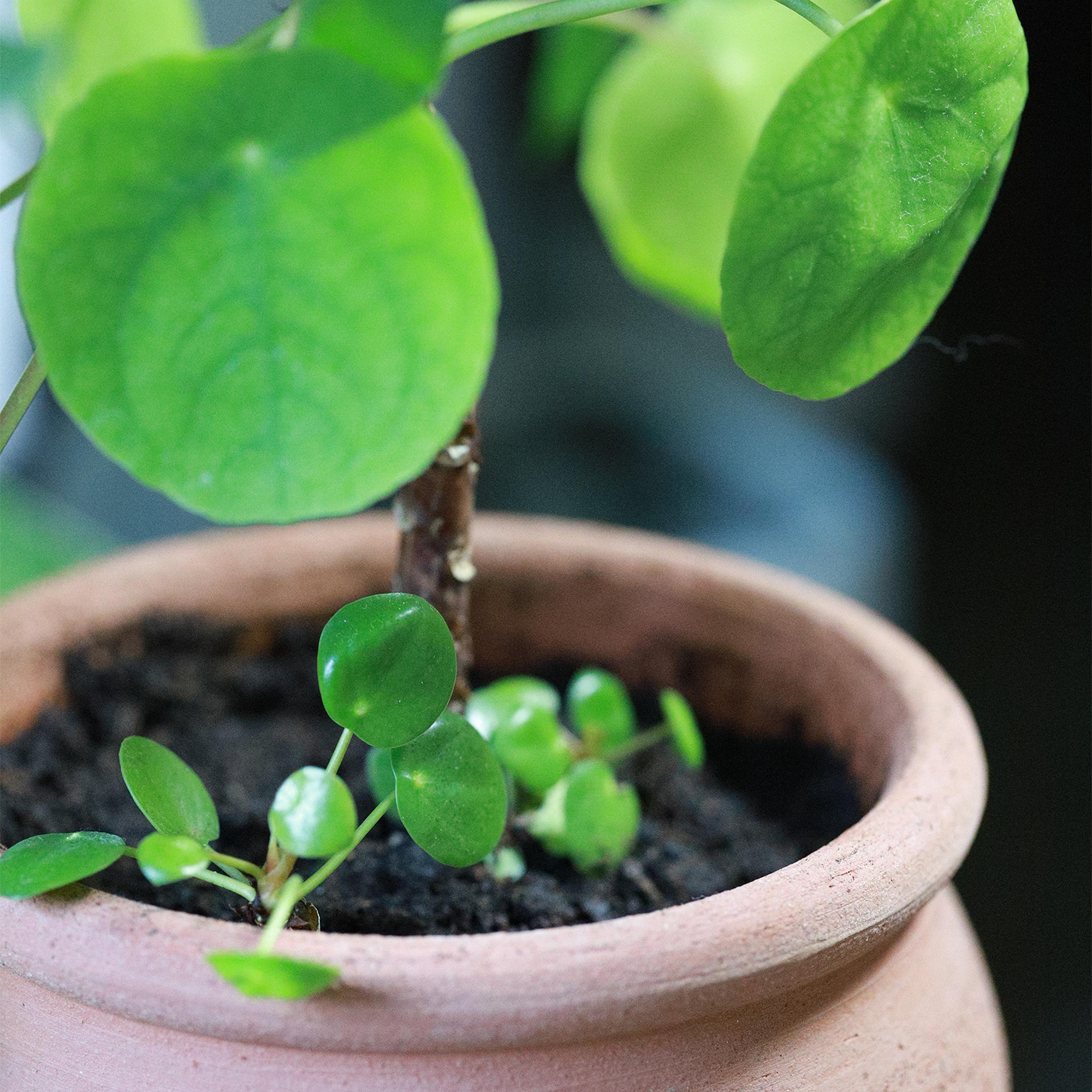
Pilea can become leggy – especially if it’s not received enough light. When
this occurs, the plant might benefit from pruning.
‘If you’re not happy with the shape you can snip the stem and use top cutting to propagate a Chinese money plant in water before transferring into the potting mix and positioning the new plant in adequate light,’ says Lisa.
‘Trimming back any excessively long stems to encourage bushier growth,’ adds experts from Grow Urban.
FAQs
Why is my Chinese Money Plant turning yellow?
There are many causes for a Chinese Money plant turning yellow. 'Yellowing leaves often indicate overwatering or underwatering,' advises Andy Little, houseplant buyer at British Garden Centres.
Test the soil – however, if the soil is neither too wet nor dry, then yellowing could be caused by a lack of light or nutrient deficiency. Move to a brighter spot and feed with houseplant feed during the growing season.
What does an overwatered Chinese Money Plant look like?
An overwatered Chinese Money plant will have drooping and yellowing leaves – this will be easy to fix by letting the plant dry out (you may need to assess its drainage).
If the plant has started to wilt or the leaves have gone mushy, then you need to replace the plants' soil and reduce the frequency of watering. Also, check the pot has good drainage holes and that there isn't water sitting in the bottom of the cover pot.
What are the white spots on the underside of my Chinese Money Plant?
The white spots on under leaves are salt mineral deposits – a bi-product of photosynthesis – and completely harmless. Using filtered or distilled water will prevent these crystals from forming.

Holly is one of Ideal Home’s content editors. Starting her career in 2018 as a feature writer and sub-editor for Period Living magazine, she has continued this role also adding regular features for Country Homes & Interiors and the Ideal Home website to her roster. Holly has a passion for traditional and country-inspired interiors – especially kitchen design – and is happiest when exploring the countryside and hills of the Lake District. A keen gardener, she is a strong believer that you can never have too many houseplants.
-
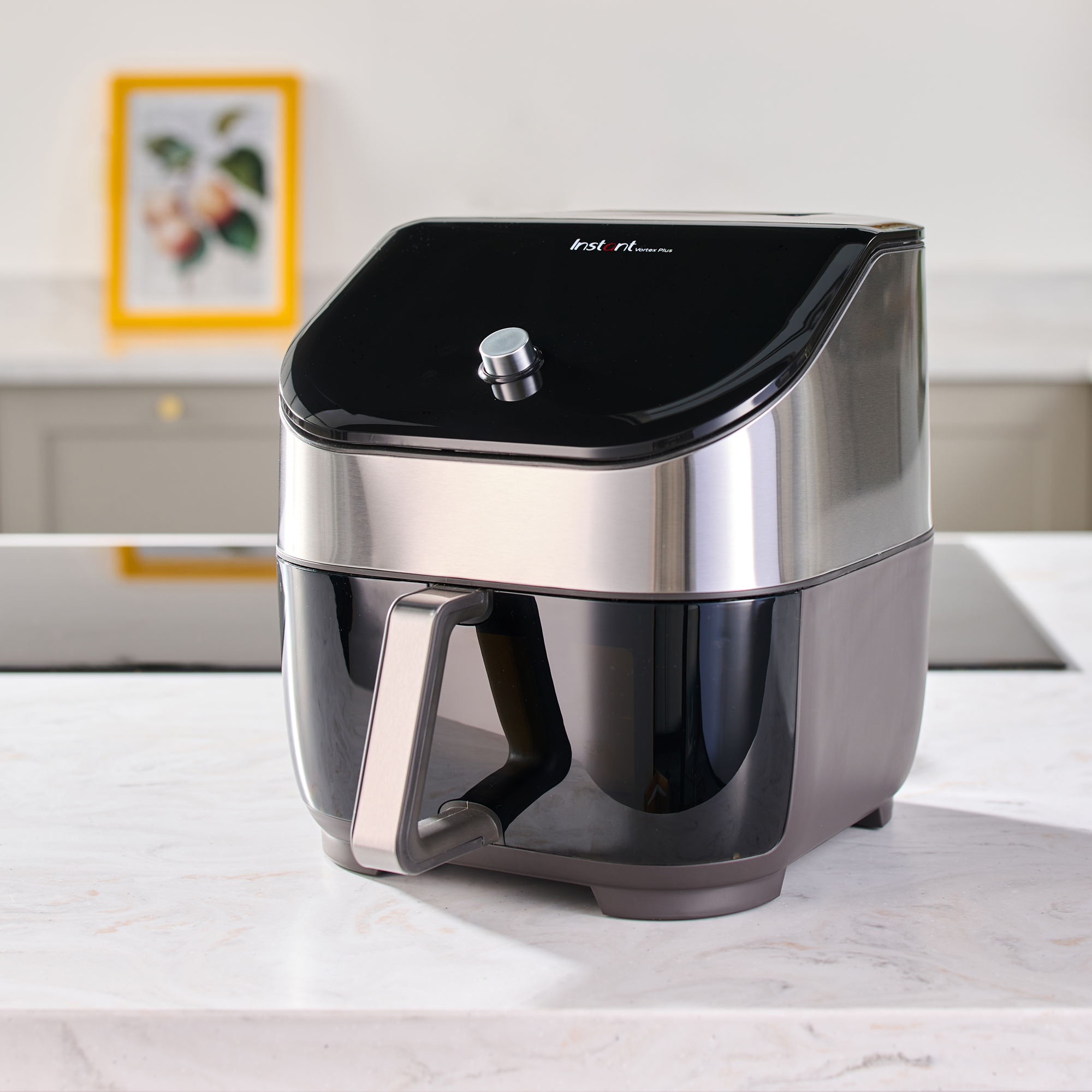 Should an air fryer be on display in a kitchen or hidden away? This is why I always keep my small appliances on the worktop
Should an air fryer be on display in a kitchen or hidden away? This is why I always keep my small appliances on the worktopAre you on team display or neatly hidden away? Share your opinion in the comments
By Rebecca Knight
-
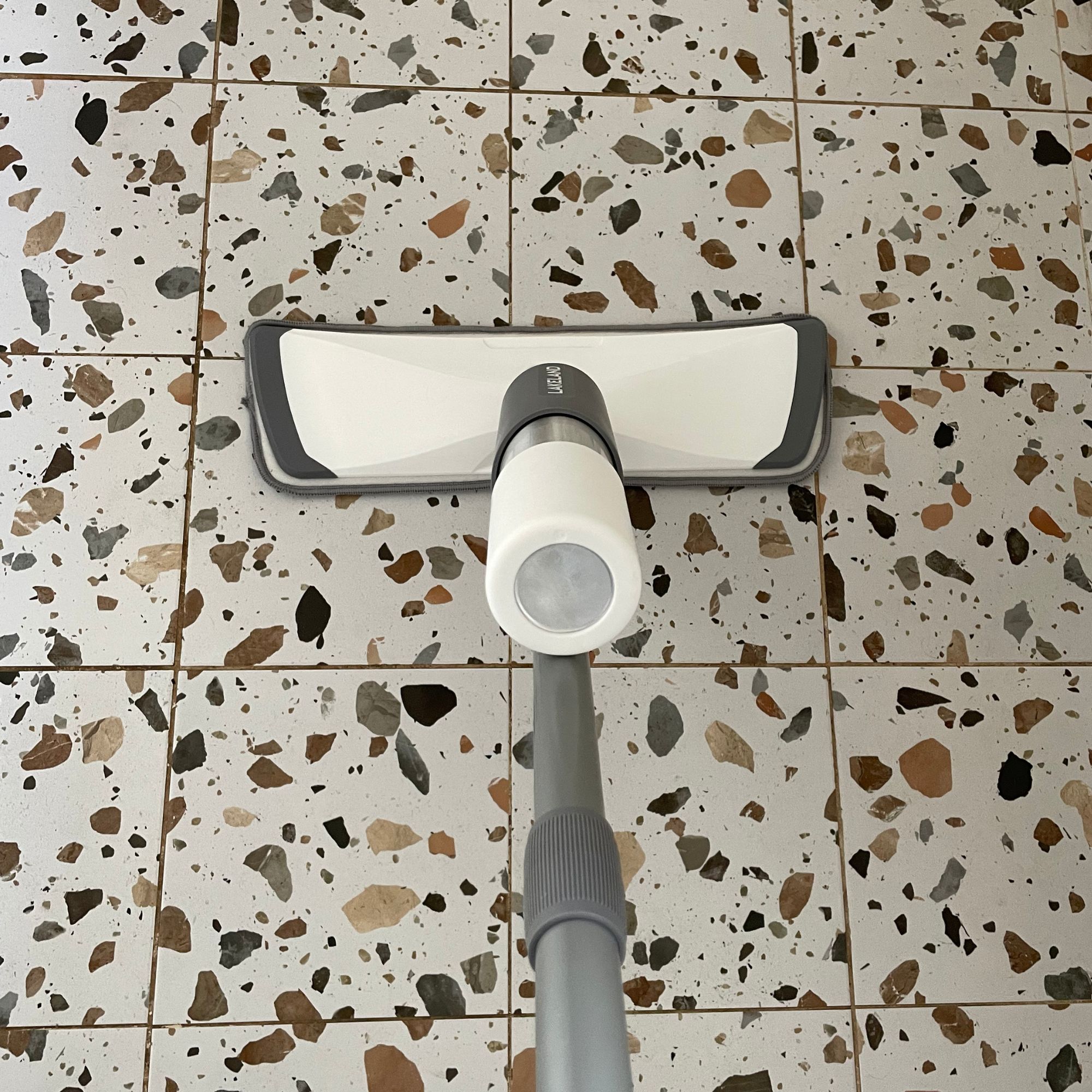 Experts warn that these 5 mopping mistakes are making your floors dirtier — and damaging your floors in the process
Experts warn that these 5 mopping mistakes are making your floors dirtier — and damaging your floors in the processThis is how to keep them clean and avoid costly damage
By Lauren Bradbury
-
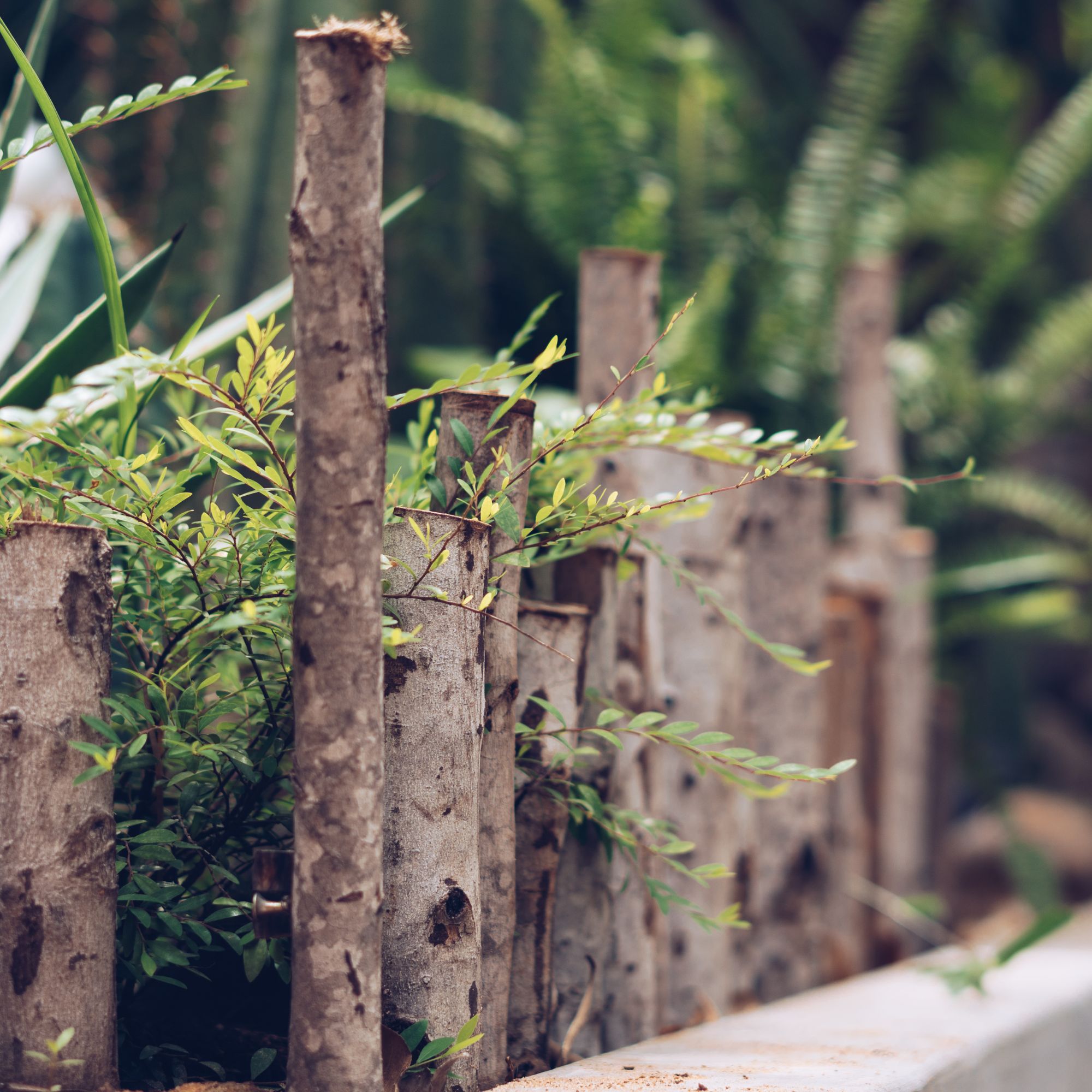 Move over, fences – dead hedges are the wild and wonderful alternative your garden will love and they're easier to build than you'd think
Move over, fences – dead hedges are the wild and wonderful alternative your garden will love and they're easier to build than you'd thinkThe perfect eco-friendly solution for small gardens
By Kayleigh Dray
